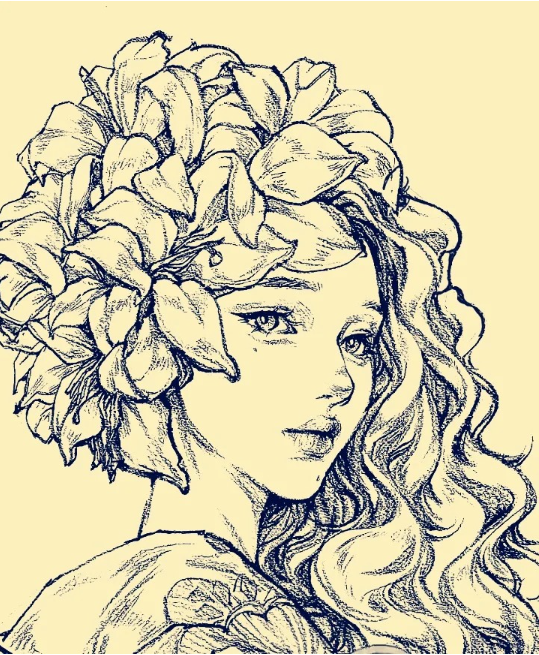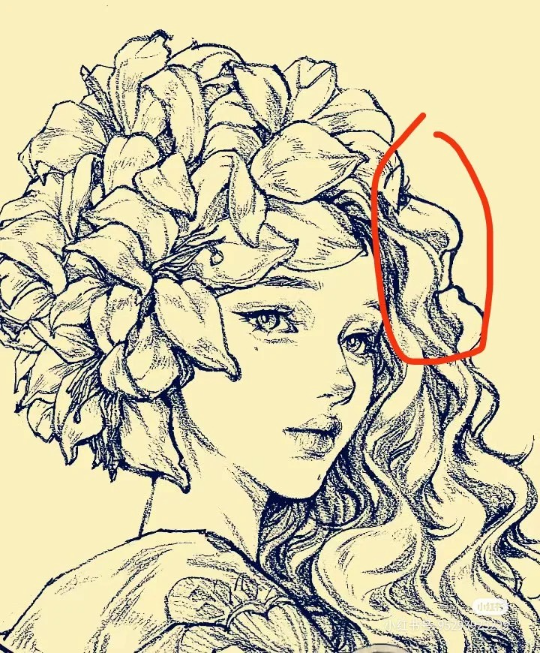Mastering the Floral Crown Portrait: A Guide to Sketching Lush Botanical Beauty
Why Floral Crown Portraits Enchant Artists and Viewers
Few images capture the balance between human elegance and natural splendor as effortlessly as a portrait crowned with blossoms. The photo—a soft pencil rendering of a young woman framed by abundant lilies—demonstrates how flowers can transform a simple face sketch into an evocative work of art. Whether you’re a budding illustrator or a seasoned portraitist, mastering the floral crown style enriches your repertoire and connects you to centuries of artistic tradition.

The Timeless Appeal of Flowers in Portraiture
Flowers have long symbolized beauty, vitality, and transformation in art. From Botticelli’s Primavera to modern-day editorial shoots, blooms convey:
- Femininity and Grace: Petals echo the curves of hair and facial contours, reinforcing the subject’s softness.
- Seasonal Mood: Choosing lilies suggests purity and renewal, while roses evoke passion or romance.
- Symbolic Narrative: Each flower carries its own lore—lilies for innocence, daisies for youth—allowing the artist to tell a deeper story.
By weaving botanical elements into portraits, you invite viewers to explore layered meanings beyond the gaze alone.
Gathering Inspiration: Botanical References and Mood Boards
Before lifting pencil to paper, immerse yourself in floral imagery:
- Live Studies: Arrange a bouquet of lilies, orchids, or your favorite blossoms. Observe petal shapes, stamen structures, and how leaves drape around stems.
- Photo Collections: Curate high-resolution images of flower crowns from fashion editorials, historical paintings, and nature photography.
- Mood Boards: Combine your floral references with portrait poses that resonate—tilted heads, over-the-shoulder glances, flowing hair—to spark composition ideas.
This preparatory phase sharpens your visual vocabulary and ensures authenticity in your final sketch.

Essential Materials for Capturing Botanical Detail
The right tools amplify your ability to render delicate petals and lush foliage:
- Pencils: A range from 2H (hard) to 6B (soft) lets you sketch light petal veins and deep shadowed folds.
- Paper: Smooth Bristol or fine-grain hot-pressed watercolor paper offers a perfect balance—transporting graphite crisply while resisting smudging.
- Erasers: Kneaded erasers mold to lift stray marks without damaging paper, while vinyl erasers cleanly remove bold lines.
- Blending Tools: Tissues or tortillons gently soften transitions in both skin shading and petal curvature.
- Sharpener & Sandpaper Block: Keep pencil points precise for drawing stamen filaments and hair strands.
Quality materials not only enhance your results but also streamline the creative process.
Structuring Your Sketch: From Face to Flowers
A well-planned layout ensures your floral crown integrates seamlessly with the portrait:
- Block In the Head Shape: Lightly draw an oval to define the skull. Mark key landmarks—eyes, nose tip, and mouth line—so facial features remain proportional.
- Map the Crown’s Base: Sketch a loose halo around the head where flowers will sit, paying attention to how blooms flow with hair direction.
- Outline Major Flowers: Place large petals first—like lily tepals—arranged organically, some tucked behind hair, others overlapping the forehead.
- Draw Hair Flow: Let hair strands weave between blooms, occasionally hiding behind petals to enhance depth.
- Add Facial Features: With the crown in place, refine the eyes, nose, and lips. The blooms now frame the expression, so ensure the gaze complements the floral arrangement’s mood.
This step-by-step sequencing balances focus on both portrait and botanicals, avoiding overcrowding or misalignment.

Techniques for Realistic Petal and Leaf Rendering
Capturing the delicate texture of petals requires mindful mark-making:
- Contour Lines: Follow each petal’s curved edge, using varied pressure to suggest thickness—lighter at the tip, darker at the base.
- Vein Detailing: Draw fine, branching veins with a sharp 2H pencil. Blend gently along their edges to imply translucency.
- Shadow and Fold: Identify where petals overlap. Lay soft 4B shading in the fold, then blend outward, leaving petal surfaces luminous.
- Leaf Variegation: For leaves, combine mid-tone graphite with subtle crosshatching, hinting at mottled patterns. A kneaded eraser can lift tiny flecks for realism.
- Petal Imperfections: Nature isn’t flawless—tuck slight creases or uneven petal edges into your design for authenticity.
By varying line quality and layering graphite, your floral crown will sing with three-dimensional realism.

Balancing Portrait and Botanical Elements
To prevent the flowers from overpowering your subject:
- Value Contrast: Keep the face in mid-tones with gentle shadows. Reserve the darkest pencils (6B–8B) for deep floral shadows and hair accents.
- Selective Focus: Sharpen detail around the eyes and central blooms. Let outer petals and hair wisps remain slightly looser, guiding the viewer’s gaze naturally.
- Compositional Flow: Align petal curves with hair waves and facial tilts. This harmony unites the human form and botanical elements into a cohesive whole.
- Negative Space: Embrace areas of untouched paper—perhaps around the neck or behind the crown—to give breathing room and highlight shapes.
Thoughtful contrast and focus management ensure both face and flowers resonate in harmony.
Finishing Touches: Elevating Your Floral Portrait
Once your pencil work is complete, consider these refinements:
- Ink Accents: For graphic flair, ink select outlines—petal ridges or the eye contour—with a fine nib pen. This can evoke a modern illustration style.
- White Highlights: A white gel pen adds crisp highlights to the iris, stamen tips, or dew drops on petals, intensifying lifelike sparkle.
- Subtle Color Wash: A pale watercolor glaze over the flowers injects gentle hues—soft pinks, buttery yellows—while preserving graphite detail.
- Signature Placement: Integrate your signature organically, perhaps as a small leaf tucked into the crown’s curve.
These finishing touches transform a lovely sketch into a polished piece ready for framing or sharing online.

Conclusion: Bloom in Every Portrait
Drawing a floral crown portrait marries the timeless beauty of the human face with nature’s boundless creativity. By gathering rich botanical references, selecting quality materials, structuring your composition thoughtfully, and mastering petal- and leaf-rendering techniques, you’ll craft portraits that captivate and convey deeper narratives of growth, renewal, and femininity. So pick up your pencil, choose your favorite flowers—be they lilies, roses, or wildblossoms—and let each delicate petal infuse your next portrait with the radiant magic of springtime.





